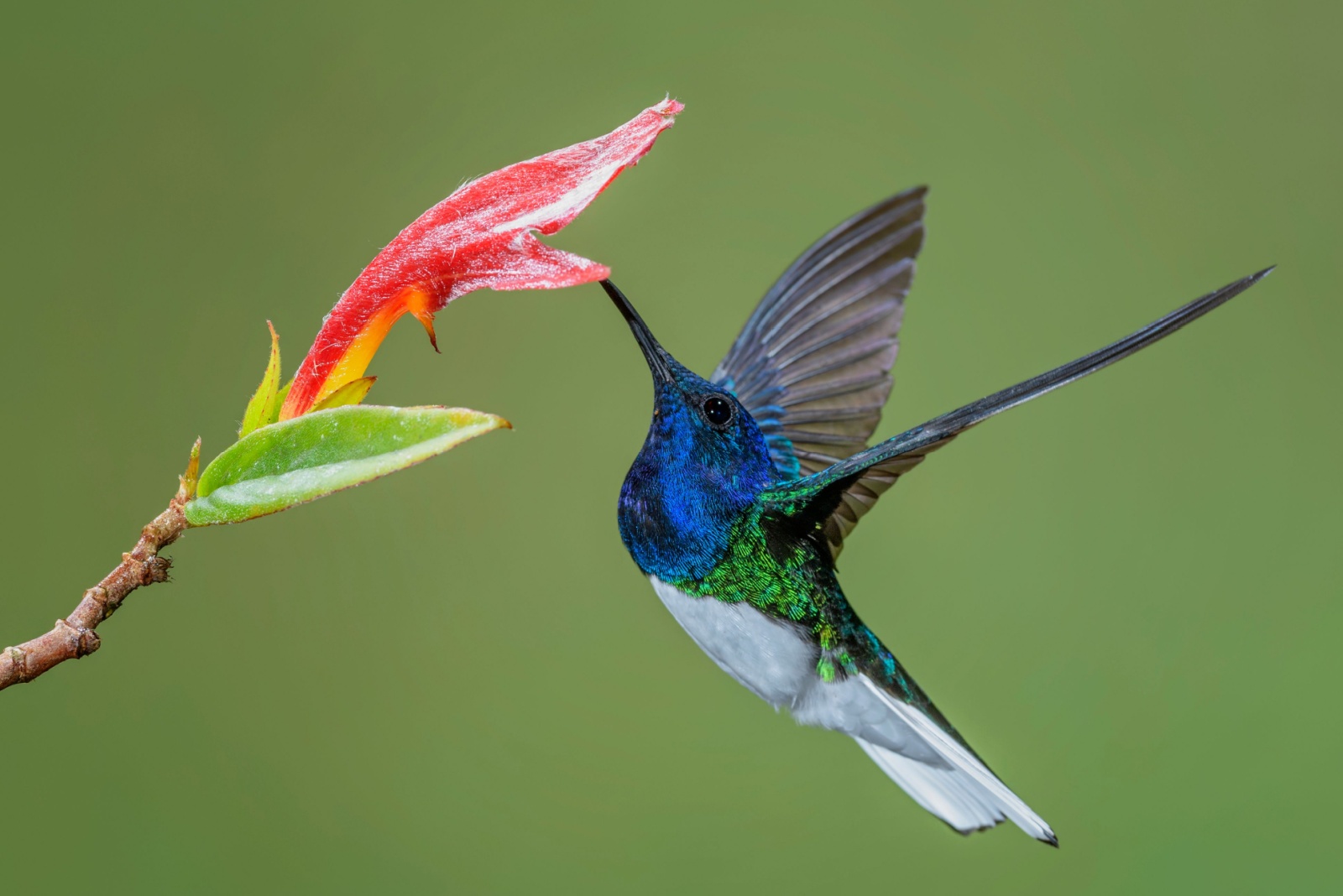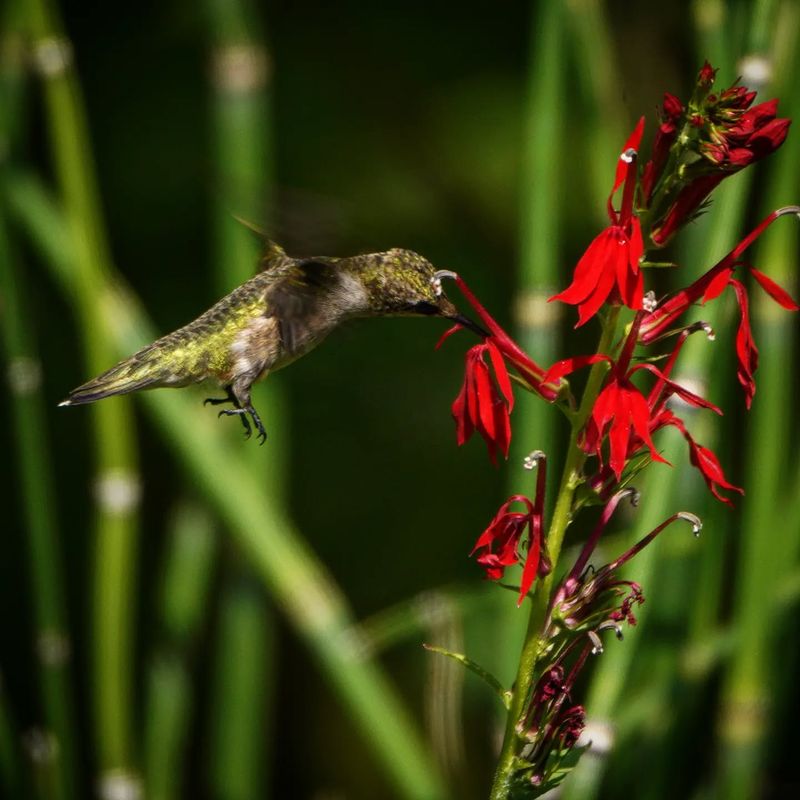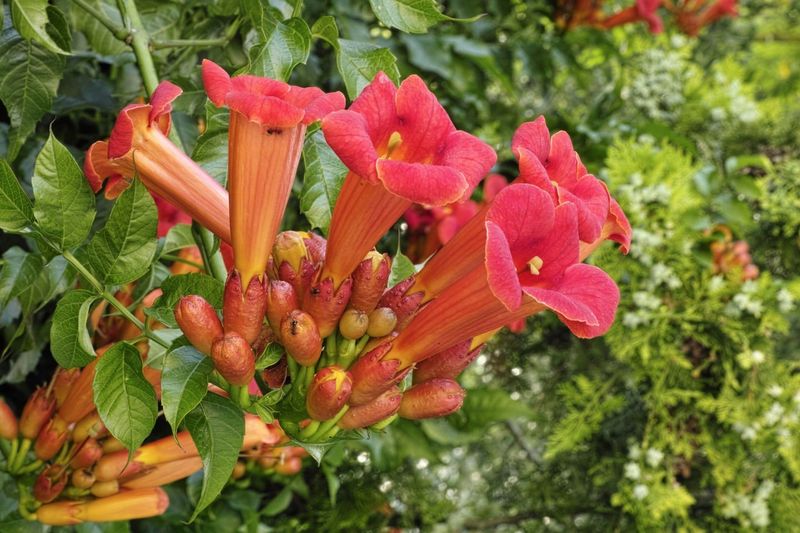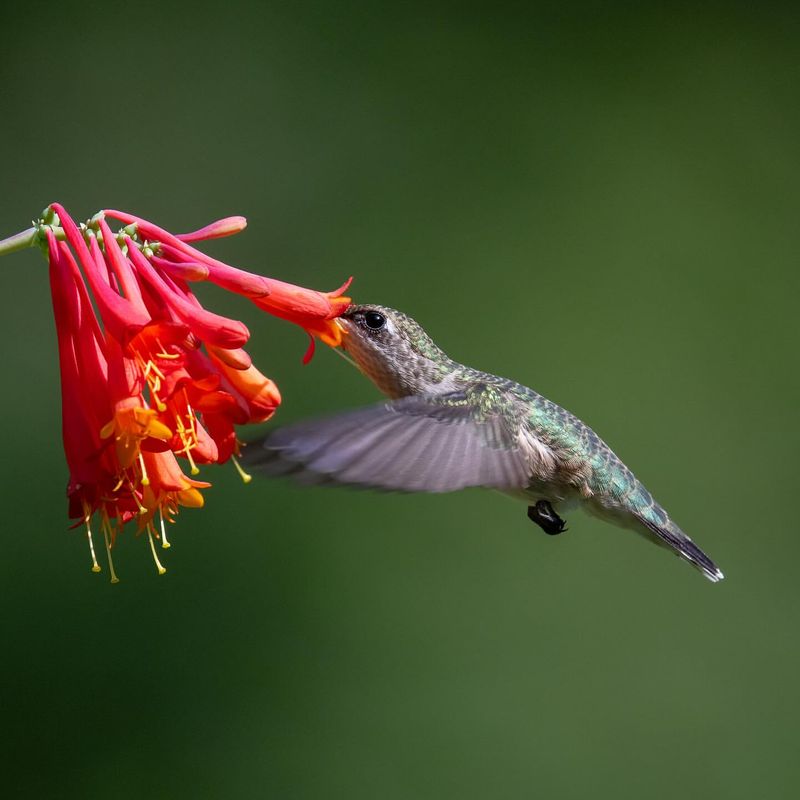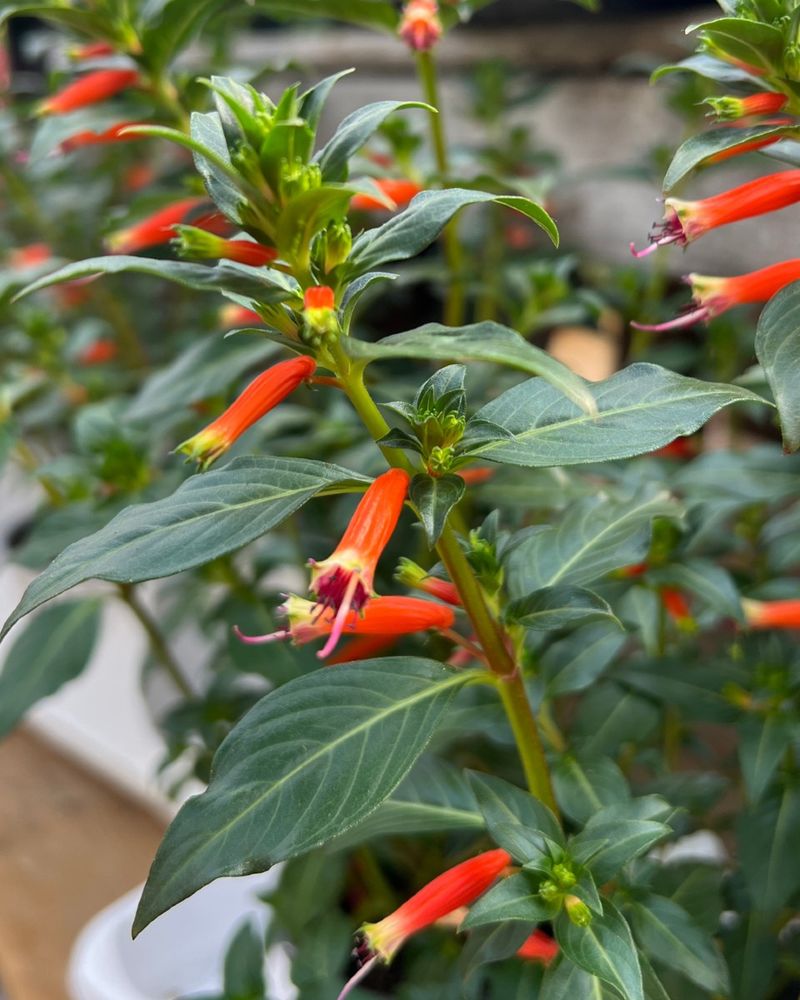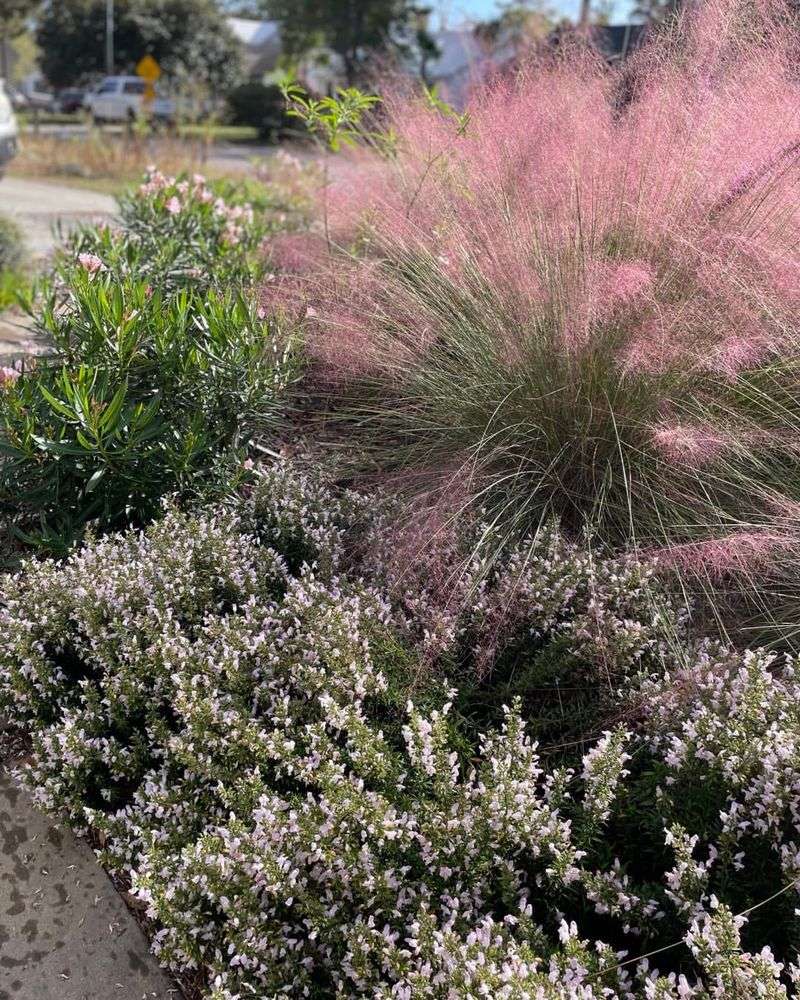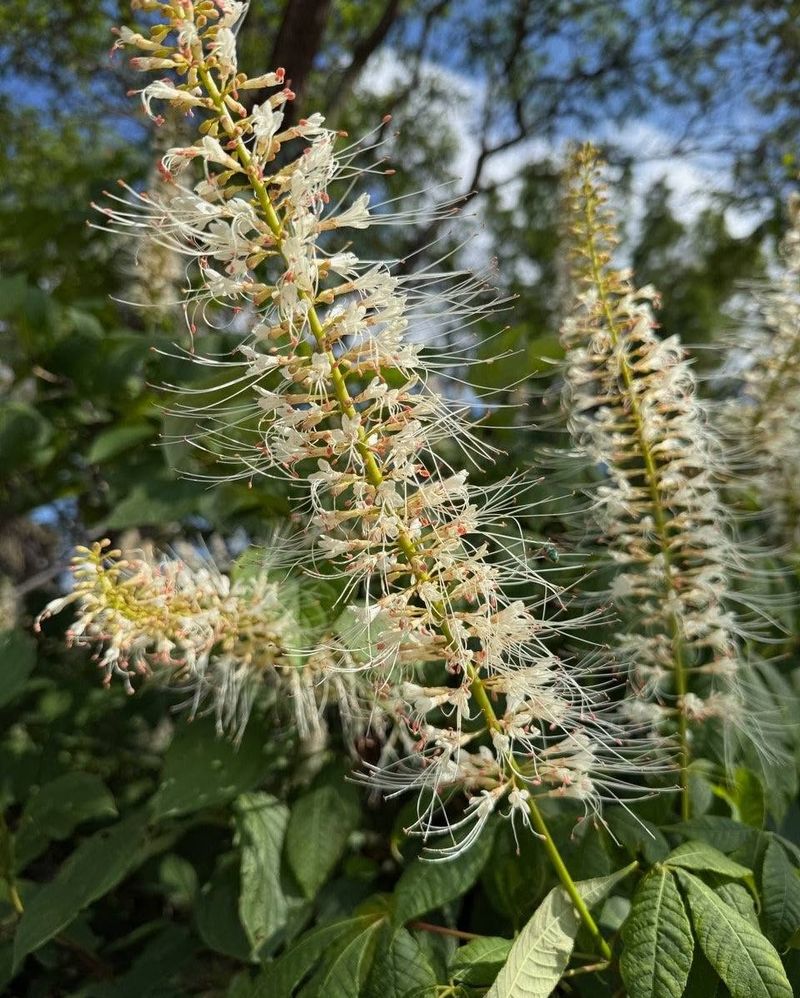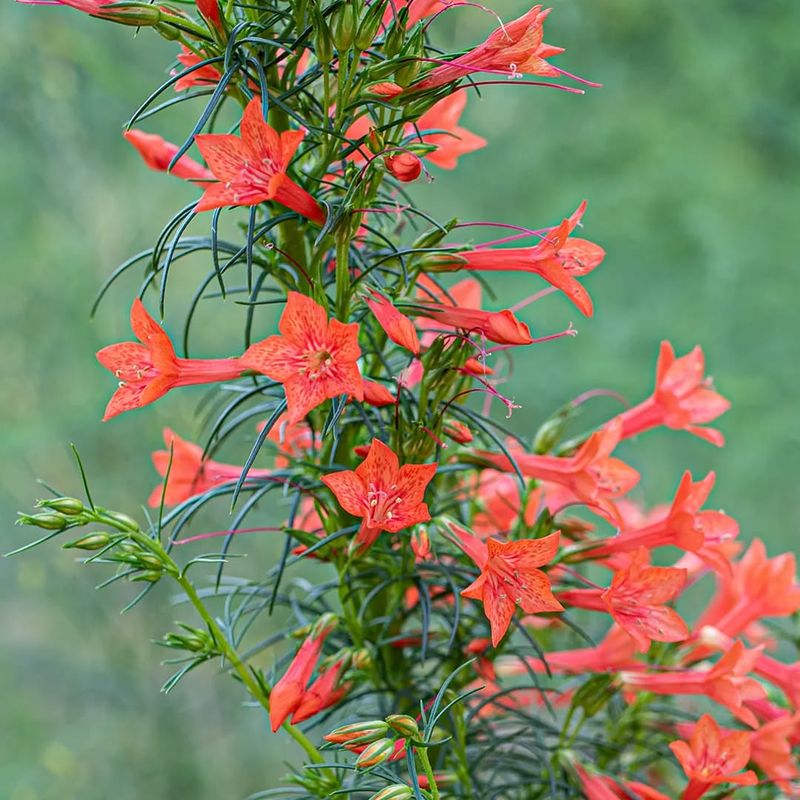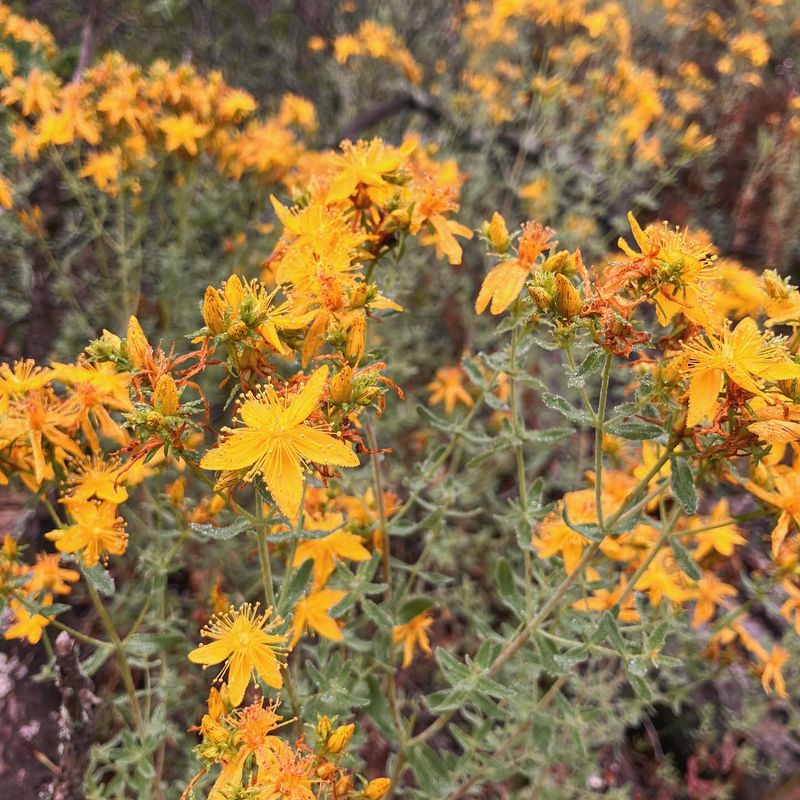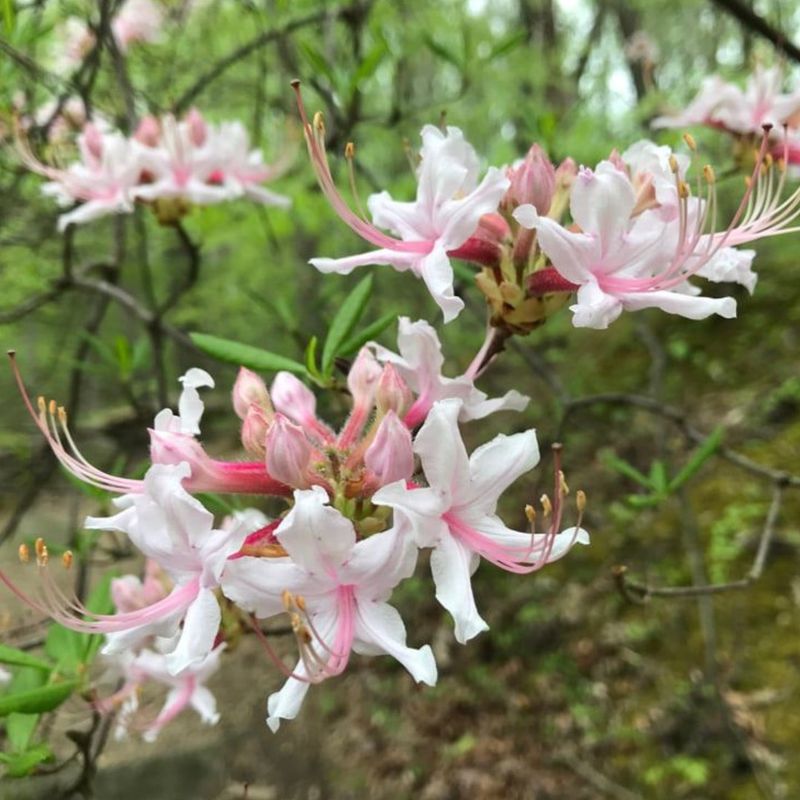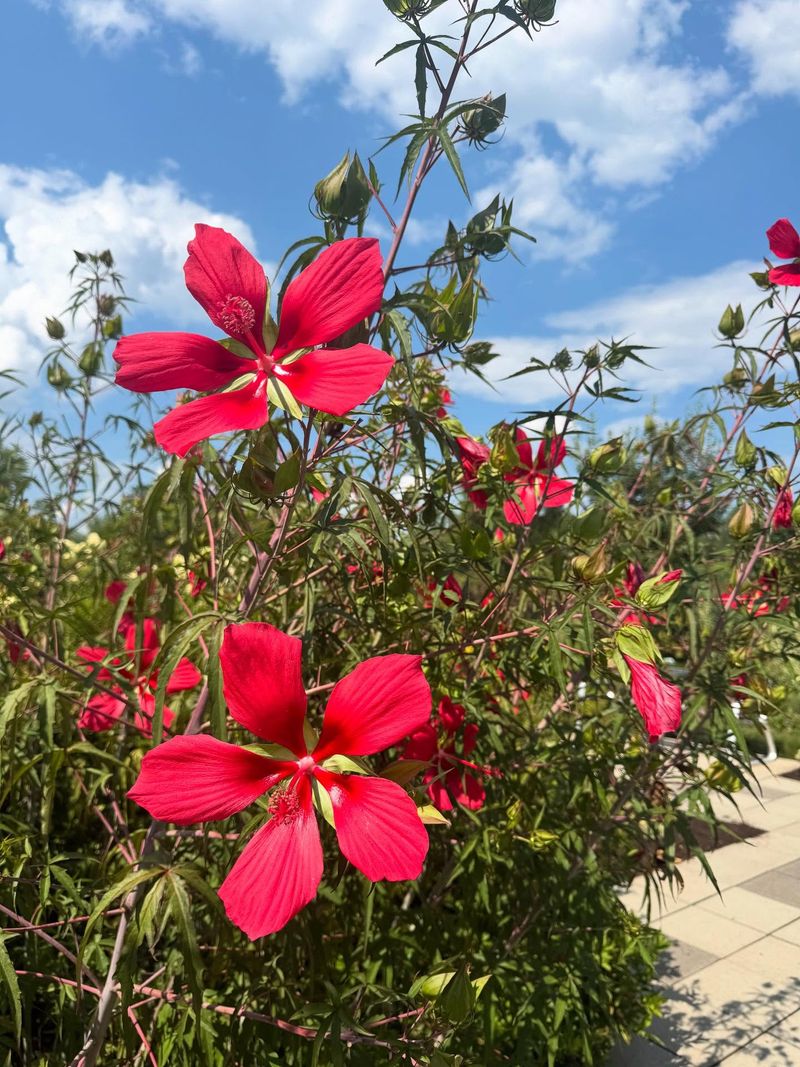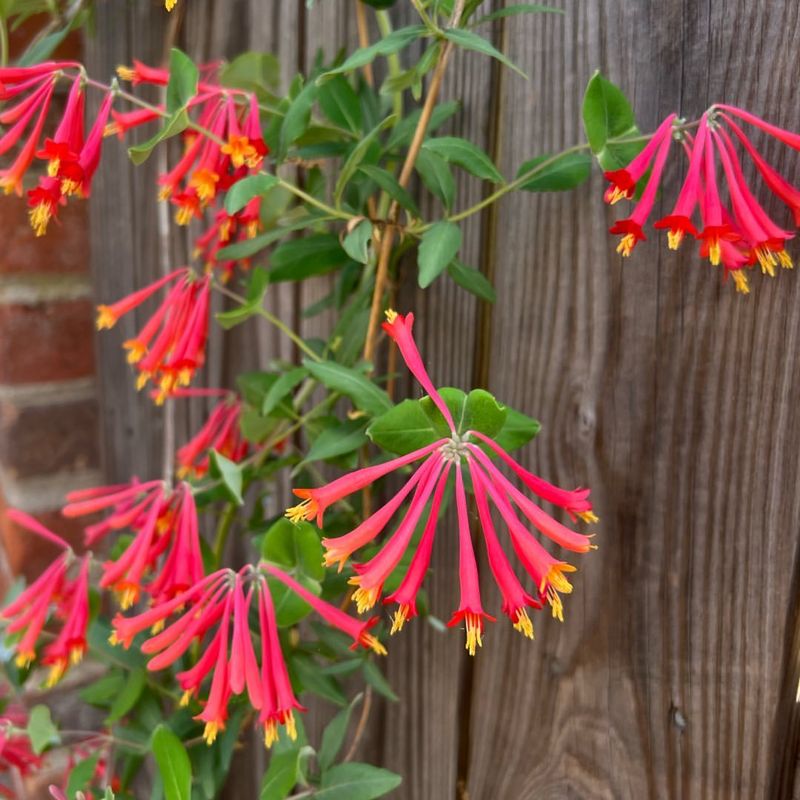Georgia’s gardens buzz with tiny visitors each spring through fall as hummingbirds return from their winter homes. These remarkable flyers seek nectar-rich blooms that fuel their lightning-fast metabolism.
While many gardeners plant common favorites like bee balm and trumpet vine, Georgia offers unique flowering plants that attract these jewel-toned birds but often get overlooked.
1. Cardinal Flower
Brilliant scarlet spikes of Cardinal Flower create a natural beacon for hummingbirds in moist areas across Georgia. The tubular blooms perfectly match a hummingbird’s specialized bill.
Native to stream banks and wetlands, this dramatic perennial tolerates partial shade, making it perfect for woodland garden edges. Despite its delicate appearance, Cardinal Flower proves surprisingly sturdy once established.
2. Crossvine
Climbing vigorously up trees and structures, Crossvine produces trumpet-shaped flowers in shades of rusty orange to brick red. The tubular blooms appear in spring, often before competing nectar sources.
Unlike its more famous cousin trumpet creeper, this native vine behaves itself in the garden. Semi-evergreen foliage provides year-round interest while the plant’s clinging tendrils eliminate the need for trellising on rough surfaces.
3. Coral Honeysuckle
Unlike its invasive Japanese cousin, Coral Honeysuckle deserves a place in Georgia gardens. Slender, tubular blooms in coral-red appear from spring through fall, creating a hummingbird magnet.
This native twining vine needs sturdy support but won’t strangle trees. Gardeners appreciate its well-behaved nature and the clusters of red berries that follow flowering, attracting songbirds long after hummingbirds have migrated south for winter.
4. Mexican Cigar Plant
Fiery orange-red tubular flowers tipped with white and purple give Mexican Cigar Plant its distinctive name. The unusual blooms resemble tiny lit cigars and appear continuously from spring until frost.
Growing 2-3 feet tall, this tender perennial thrives in containers or as a summer annual in Georgia gardens. Hummingbirds become so fixated on these nectar-rich flowers they’ll often ignore nearby feeders, preferring the natural sweet reward.
5. Georgia Savory
Few gardeners realize this rare native perennial exists, much less that hummingbirds adore it. Georgia Savory produces delicate lavender tubular flowers that appear in late summer when many other blooms have faded.
Found naturally in only a handful of Georgia counties, this drought-tolerant plant thrives in rocky, sandy soils where other plants struggle. The aromatic foliage gives off a pleasant minty scent when brushed, adding sensory appeal beyond its visual charm.
6. Bottlebrush Buckeye
Dramatic white flower spikes resembling bottle brushes erupt from this native shrub in early summer. Bottlebrush Buckeye creates a woodland spectacle that draws hummingbirds despite lacking the classic red hues these birds typically prefer.
Growing naturally in Georgia’s Piedmont region, this large understory shrub spreads slowly to form colonies. The abundant nectar provides critical summer fuel for hummingbirds, while the plant’s broad leaves create cooling shade in woodland gardens.
7. Woodland Pinkroot
Slender crimson tubes of Woodland Pinkroot create a hummingbird paradise in Georgia’s dappled forest edges. This native wildflower remains largely unknown to gardeners despite its striking appearance and wildlife value.
Growing just 1-2 feet tall, the plant produces clusters of narrow, tubular flowers perfect for hummingbird feeding. Early settlers once harvested the roots to treat intestinal parasites, but today its greatest value lies in supporting native pollinators in woodland gardens.
8. Standing Cypress
Reaching skyward with fiery orange-red tubular blooms, Standing Cypress creates a dramatic vertical accent in Georgia gardens. This biennial native plant forms a rosette of ferny foliage its first year before sending up spectacular 3-6 foot flower spikes.
Perfectly adapted to Georgia’s hot summers and sandy soils, Standing Cypress thrives where many other plants struggle. Hummingbirds will travel significant distances to visit these nectar-rich blooms that appear just as spring flowers begin to fade.
9. Georgia Aster
Vibrant purple daisy-like blooms might seem unlikely hummingbird attractors, but Georgia Aster proves exceptions exist. This rare native perennial produces late-season nectar when many other flowers have finished blooming.
Once common across Georgia’s Piedmont region, this threatened wildflower now exists primarily in protected areas and native plant gardens. The nectar-rich disk flowers at each bloom’s center provide critical fuel for hummingbirds preparing for migration or lingering into fall.
10. Coppery St. John’s Wort
Golden star-shaped flowers with prominent coppery stamens make this native shrub a surprising hummingbird favorite. Coppery St. John’s Wort blooms throughout summer in Georgia’s coastal plain and lower Piedmont regions.
Unlike its invasive European cousin, this well-behaved native remains compact at 2-3 feet tall. The unusual flowers lack nectar tubes but produce abundant pollen that supplements hummingbirds’ protein needs during breeding season, complementing their primarily nectar-based diet.
11. Wild Azalea
Fragrant funnel-shaped blooms in shades of peachy-pink appear before the leaves on Wild Azalea, creating a ghostly spring spectacle in Georgia woodlands. Hummingbirds returning from migration seek these early nectar sources eagerly.
Unlike cultivated azaleas, this native deciduous shrub tolerates drier conditions once established. The tubular flowers with extended stamens provide accessible nectar for hummingbirds while creating a delicate woodland aesthetic perfect for naturalistic garden designs.
12. Scarlet Rosemallow
Dinner-plate sized scarlet blooms make Scarlet Rosemallow impossible to overlook in Georgia’s wetland edges. This native hibiscus produces some of the largest flowers in North America, creating dramatic focal points that hummingbirds can’t resist.
Growing 4-6 feet tall, the plant thrives in consistently moist soil but tolerates occasional flooding. The massive flowers open for just a single day each, but the plant produces them continuously from summer through early fall, providing reliable nectar for hungry hummingbirds.
13. Trumpet Honeysuckle
Clusters of slender, trumpet-shaped flowers in coral-red dangle from this native vine throughout Georgia’s growing season. Trumpet Honeysuckle’s extended bloom time makes it exceptionally valuable for supporting hummingbird populations.
Perfect for covering fences or climbing through shrubs, this well-mannered vine won’t take over the garden like its invasive Japanese cousin. The red berries that follow flowering provide additional wildlife value, feeding songbirds long after hummingbirds have migrated south for winter.

